

Josh Nevett
CarExpert's top five large SUV reviews of 2025
1 Day Ago
The Mitsubishi Outlander PHEV, the only mid-sized, mainstream-branded plug-in hybrid SUV in Australia, scores a sporty-looking GSR variant for 2021.
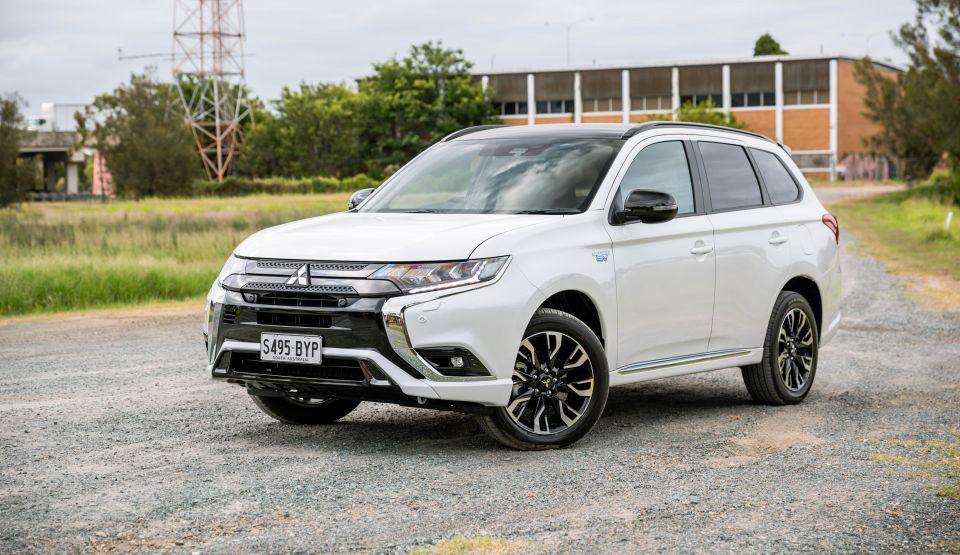
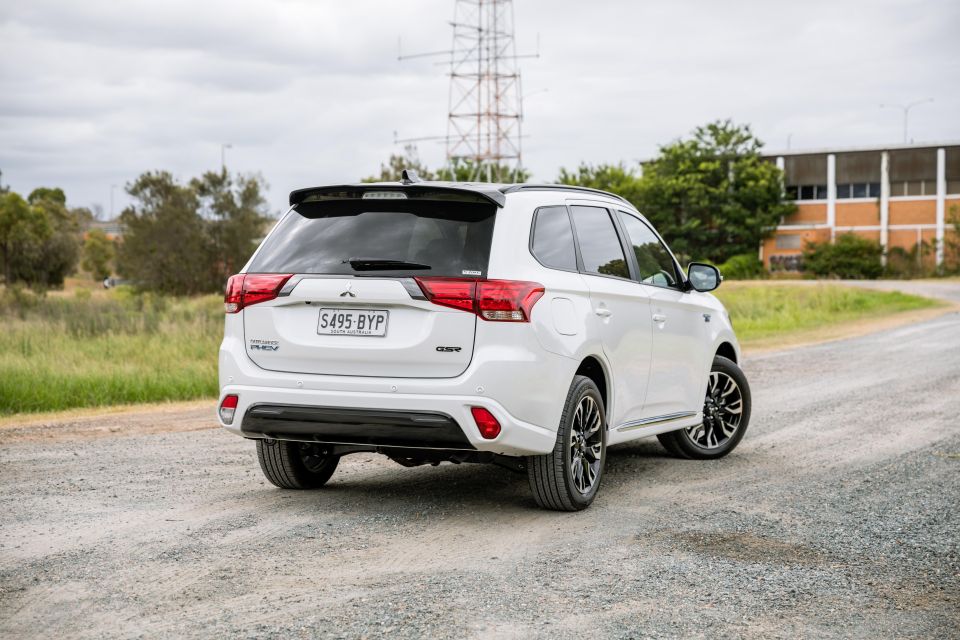

News Editor
New from
$46,990
excl. on-roads

News Editor
New from
$46,990
excl. on-roads


News Editor
New from
$46,990
excl. on-roads

News Editor
New from
$46,990
excl. on-roads
Quickly see how this car stacks up against its competition. Select any benchmark to see more details.
Where expert car reviews meet expert car buying – CarExpert gives you trusted advice, personalised service and real savings on your next new car.
When it comes to mainstream plug-in hybrid SUVs, Mitsubishi has had run of the house.
It was first to the Australian market with the Outlander PHEV in 2014 and it’s been without direct competition since then, with hybrid market leader Toyota declining to bring its plug-in RAV4 Prime here.
While Mitsubishi’s been granted a continuance thanks to Ford’s supply-related delays for the Escape PHEV forcing a 12-month wait, Chinese upstart MG will bring its e-HS plug-in mid-sized SUV later this year. Considering MG’s new ZS EV has undercut every other electric vehicle on the market, a sharp price tag for the bigger e-HS is likely, too.

Mitsubishi has a fresh new Outlander PHEV coming too, set to be revealed this year, but in the meantime this segment pioneer will have to go up against some fresh faces.
At least its exterior still looks fresh. Mitsubishi knows how to do a good facelift, and the Outlander looks better than it did at the beginning of the current generation.
The new-for-2021 GSR trim level we tested adds unique two-tone, 18-inch alloy wheels and black exterior trim, giving the Outlander PHEV an even sharper look, though its slab-sided body betrays its age somewhat.

The Outlander PHEV range opens at $47,990 before on-road costs for the base ES, a premium of $13,000 over an all-wheel drive ES with a petrol engine.
It adds keyless entry and start but misses out on the petrol ES’s third row of seating.
The GSR is priced at $52,490 before on-road costs and doesn’t have a direct equivalent in the petrol or diesel range.
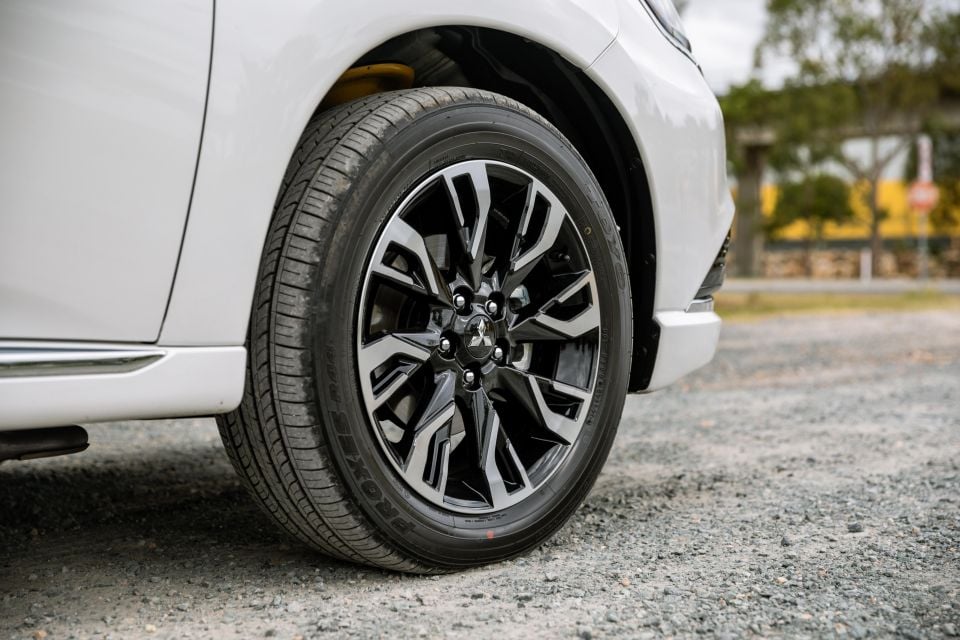
Buy your new car without the stress. It's fast, simple and completely free.

Great service from Travis and team, second time I have used this business would not hesitate to recommend them to anyone
Craig C.
Purchased a Ford Ranger in Sunshine Coast, QLD
CarExpert helped Craig save thousands on his Ford Ranger, now let us save you on your next new car.
Find a dealNew for 2021, the GSR slots in between the ES and Exceed trim levels in the Outlander PHEV range and adds a sports suspension tune.
It’s visually distinguished from other PHEV models through two-tone 18-inch alloy wheels, black mirrors, grille and roof, and microsuede/leather upholstery.
Over the PHEV ES, the GSR adds LED headlights with washers, front parking sensors, an eight-speaker sound system, heated front seats, front parking sensors and a power tailgate.
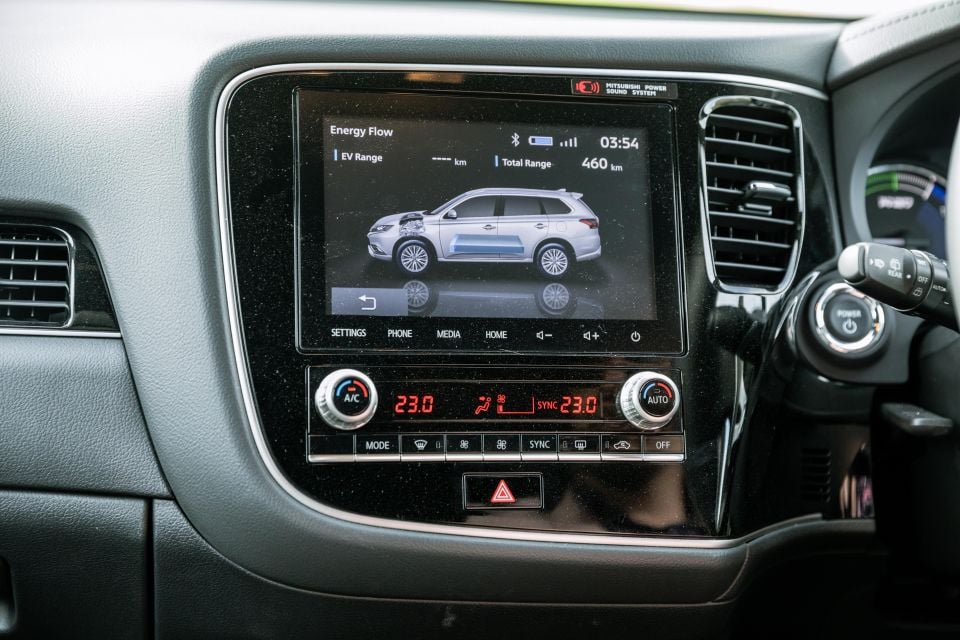
Standard equipment on the GSR and elsewhere in the Outlander range includes an 8.0-inch touchscreen infotainment system with Apple CarPlay, Android Auto and DAB radio, as well as adaptive cruise control, adaptive high-beam, keyless entry and start, along with privacy glass.
There are also the standard safety and convenience features you expect at this price point: a reversing camera, rear parking sensors, automatic headlights, rain-sensing wipers
If you want a surround-view camera, satellite navigation and a sunroof, you’ll need to step up to the Exceed. By doing so, though, you’ll miss out on the GSR’s sportier trimmings.
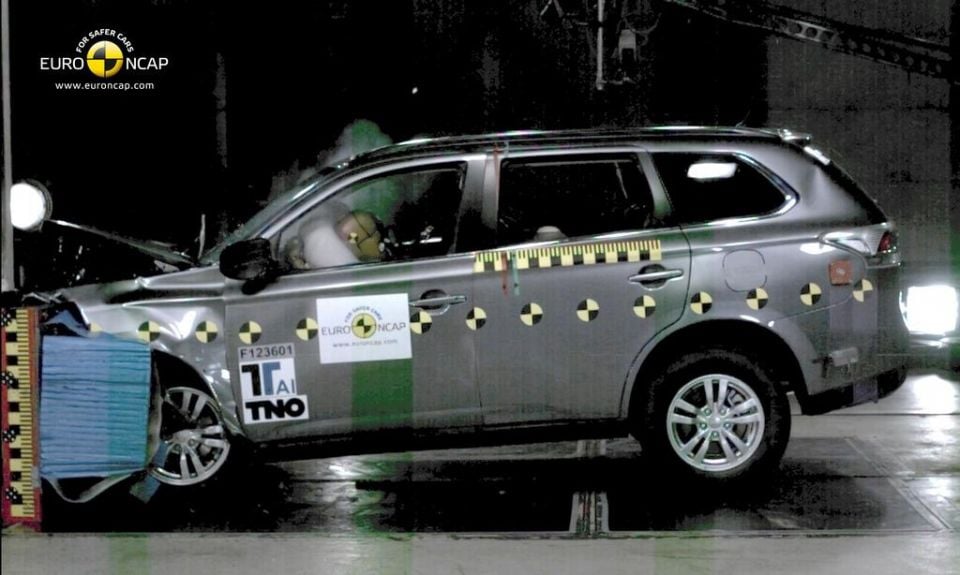
When the Outlander was tested by ANCAP in 2014, it received a rating of five stars.
This rating was based on a frontal offset score of 15.58 out of 16 and a side impact score of 16 out of 16. Whiplash and pedestrian protection were rated Good and Acceptable, respectively.
Perhaps the most notable GSR inclusions are blind-spot monitoring and rear cross-traffic alert, previously available only on the flagship Exceed.
As on the rest of the Outlander PHEV line, there’s autonomous emergency braking with forward-collision warning, as well as lane-departure warning, and front, front-side and curtain airbags plus a driver’s knee airbag.
The AEB system works at speeds of between 5 and 80km/h when a vehicle is detected and 5 and 65km/h when a pedestrian is detected.
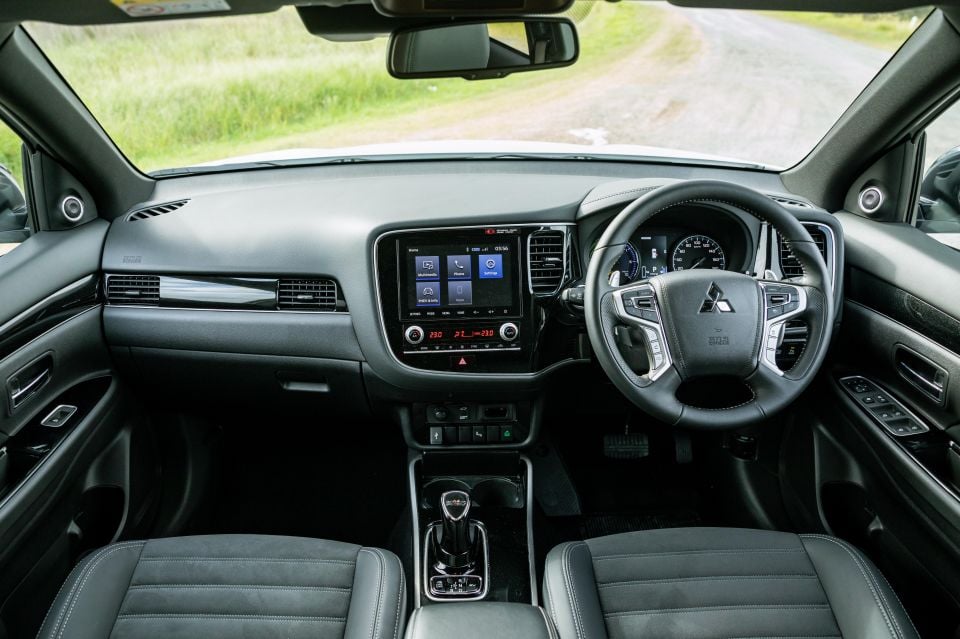
We eagerly await the arrival of the next-generation Outlander because the current car is definitely feeling its age.
There are the doors, for example, which feel so light and flimsy and require a solid slam to shut. It makes the car feel tinny.
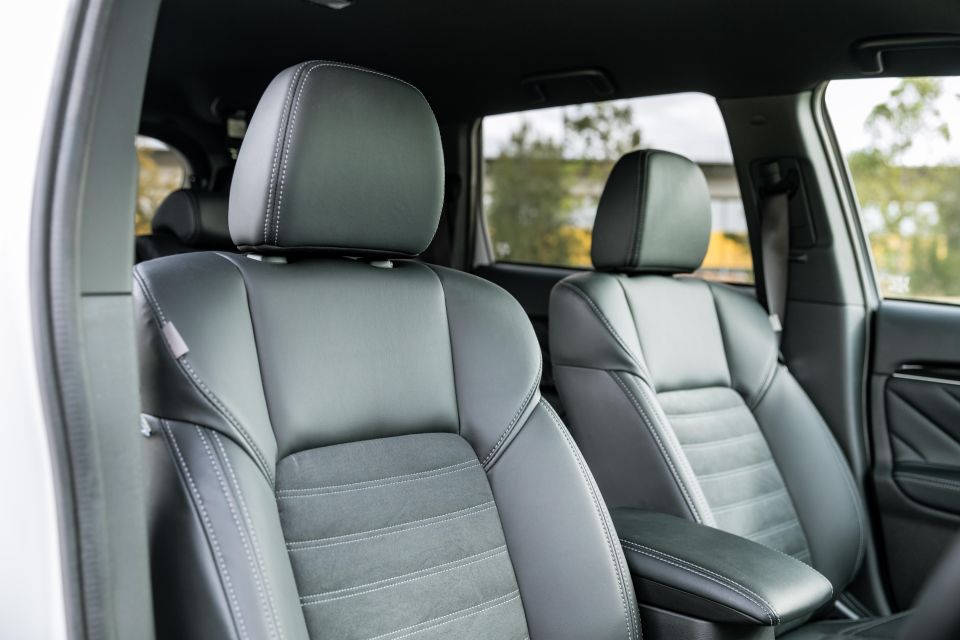
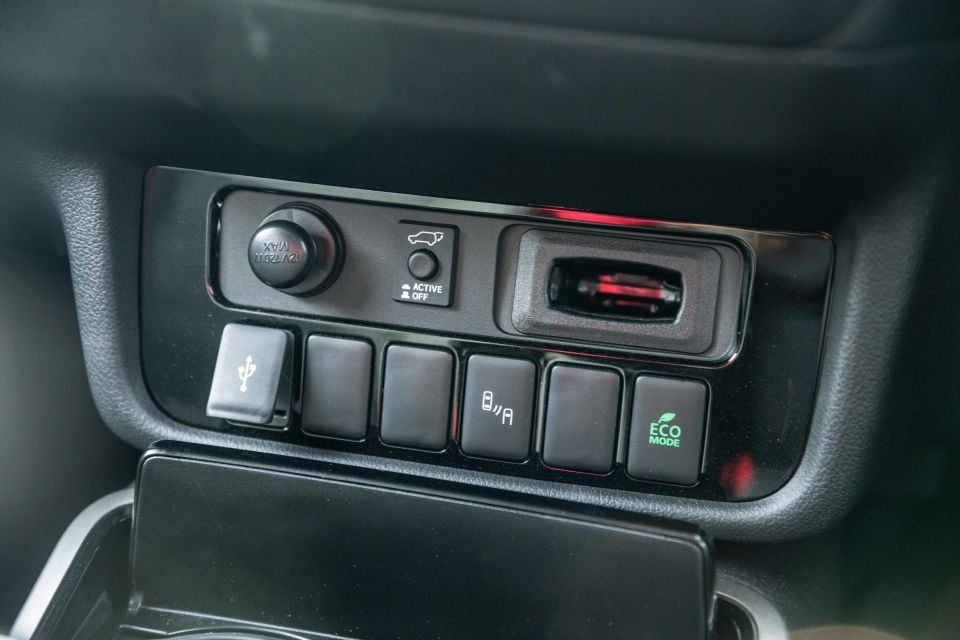

That’s a shame because once you step inside, you’re greeted by an interior that’s pretty straightforward in terms of layout and which uses some nice materials. The dash and door tops, for example, are covered in soft-touch plastics, while the seats are upholstered in microsuede and look sharp. There are enough foibles, however, to make the Outlander interior somewhat of a Potemkin village.
Those seats? They’re not terribly comfortable, feeling – despite their appearance – rather thin and slabby. The control layout? Illogical at times – the button for the lane-departure warning, for example, is on the opposite side of the steering wheel from the button for the blind-spot monitoring.
The cupholders are a decent size but there’s no place to rest a mobile phone except in one of them or in the centre console bin. At least in-door storage is adequate, with properly-sized bottle holders in each.
The steering wheel is borrowed from other Mitsubishi products, which is fine – it’s a decent tiller. But the information screen within the instrument cluster is also from the parts bin and it’s past its prime, lacking a digital speedometer despite displaying information about the hybrid and all-wheel drive systems.
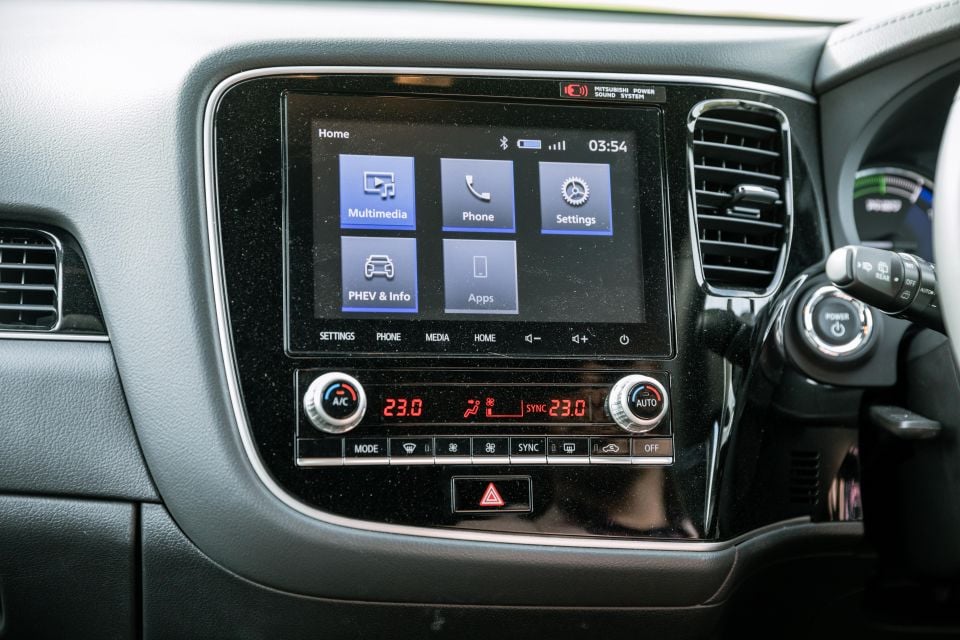
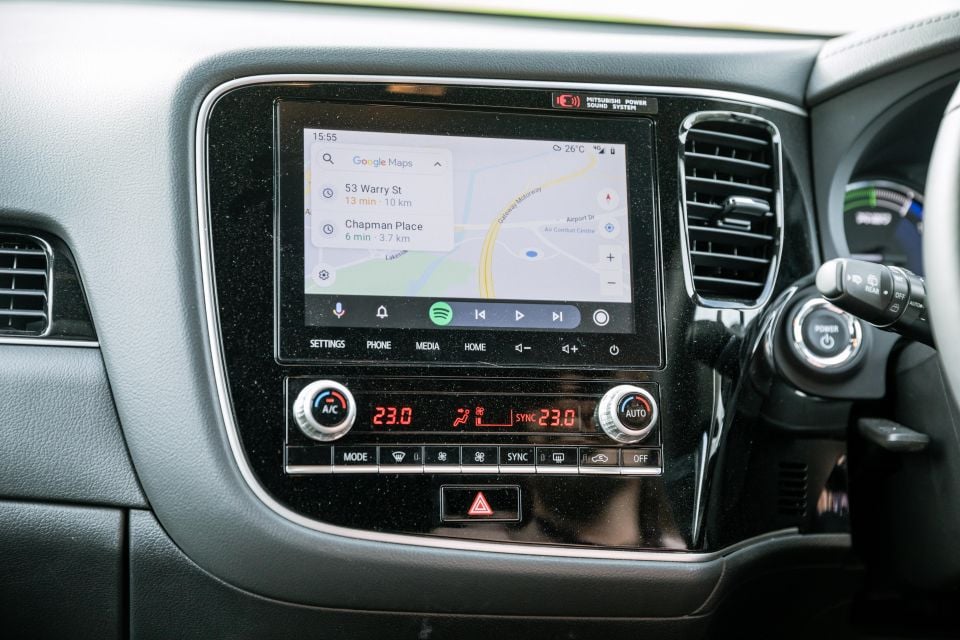
The infotainment system is also shared with other Mitsubishi products and features a dated user interface, but it’s easy enough to navigate and responds to inputs promptly.
There’s no satellite navigation but there’s smartphone mirroring so, if you want, you’ll never have to look at the standard UI.
The cabin itself is suitably spacious for this segment, though the floor is a bit higher to accommodate the hybrid componentry. That eats into legroom a bit, and also means the regular Outlander’s third row isn’t available in the PHEV.

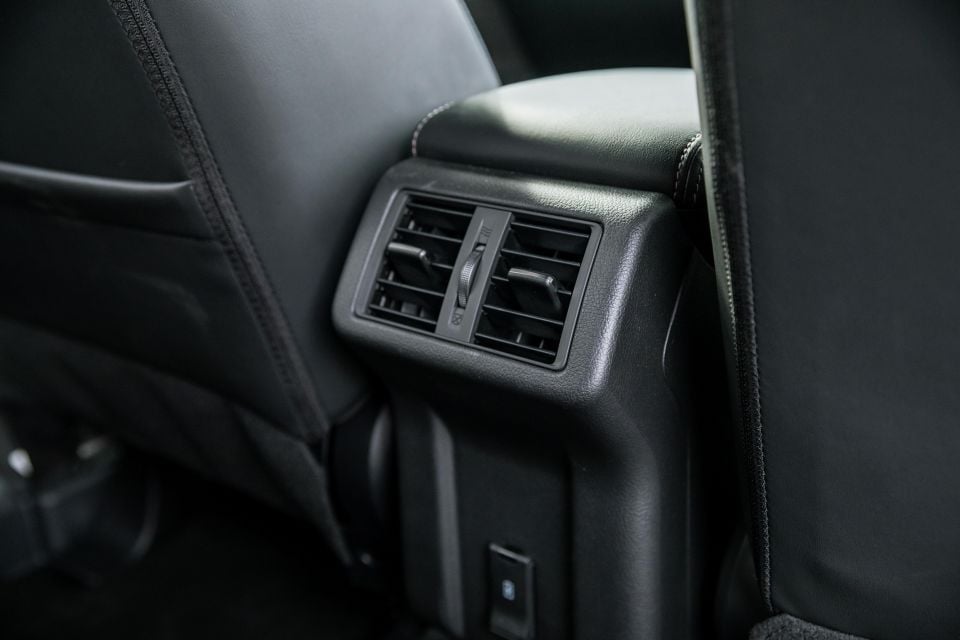
Headroom is average, while second-row occupants have vents and two USB outlets, as well as map pockets in the soft front seatbacks. There are also two ISOFIX and three top-tether anchor points for child seats.
You can just tilt the second row seatback forward for a somewhat flat load bay or, alternatively, fold it completely flat.
The latter requires you to lift the cushion, push it forward, push a lever, and push the base again. The first and second rows can be folded flat to make one giant bed of sorts, which is a neat trick.
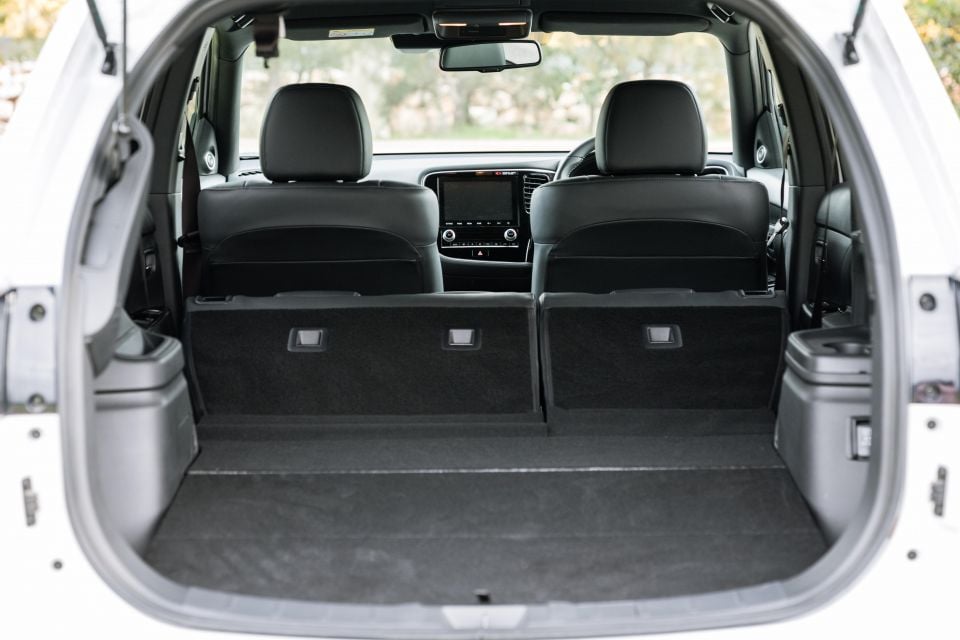
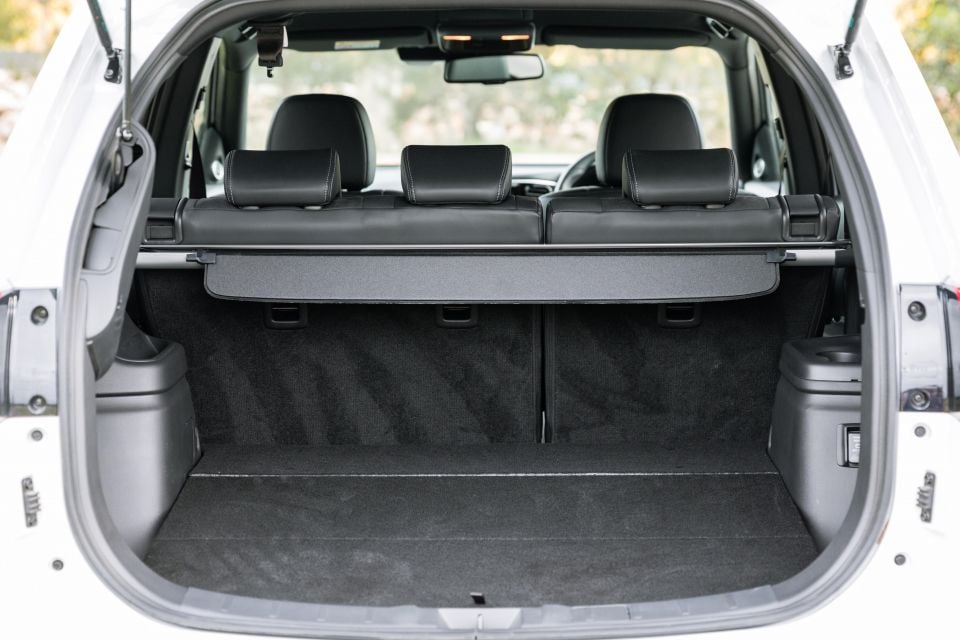
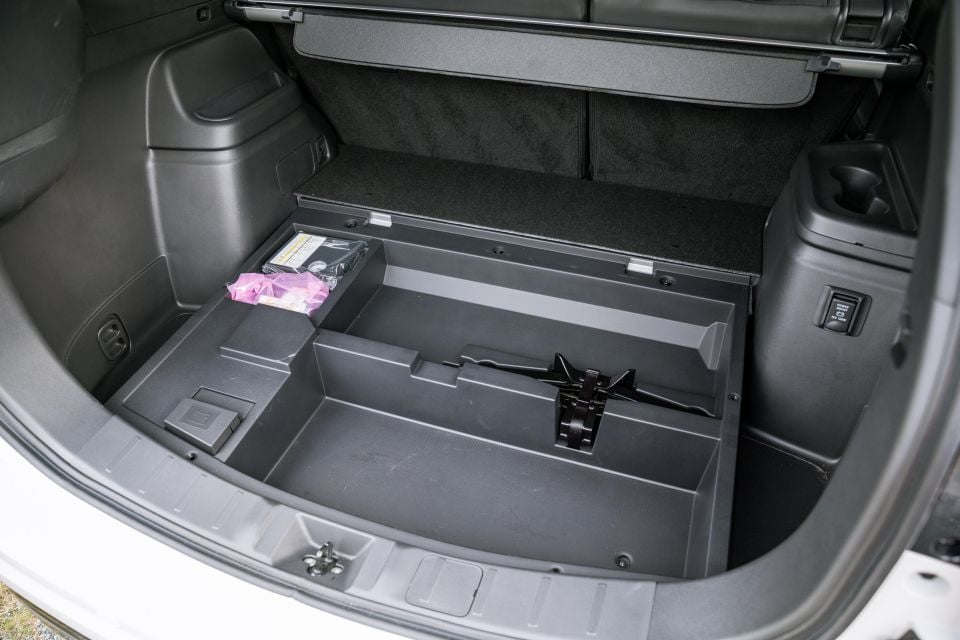
Bafflingly, you can’t open the tailgate automatically by pressing the button on the tailgate itself. Mitsubishi deactivates this function at the factory, though you can use the key fob or a button inside the cabin to open it automatically. You can, however, close the tailgate automatically by pressing a button on the inside of the tailgate.
Once you’re back there, you’ll find 463L of luggage space. This expands to 1602L with the second row folded. It’s easy to load items into the Outlander thanks to a low lip and a flat, wide floor.
You won’t find a spare wheel under that flat floor, though – instead, there’s just a repair kit.
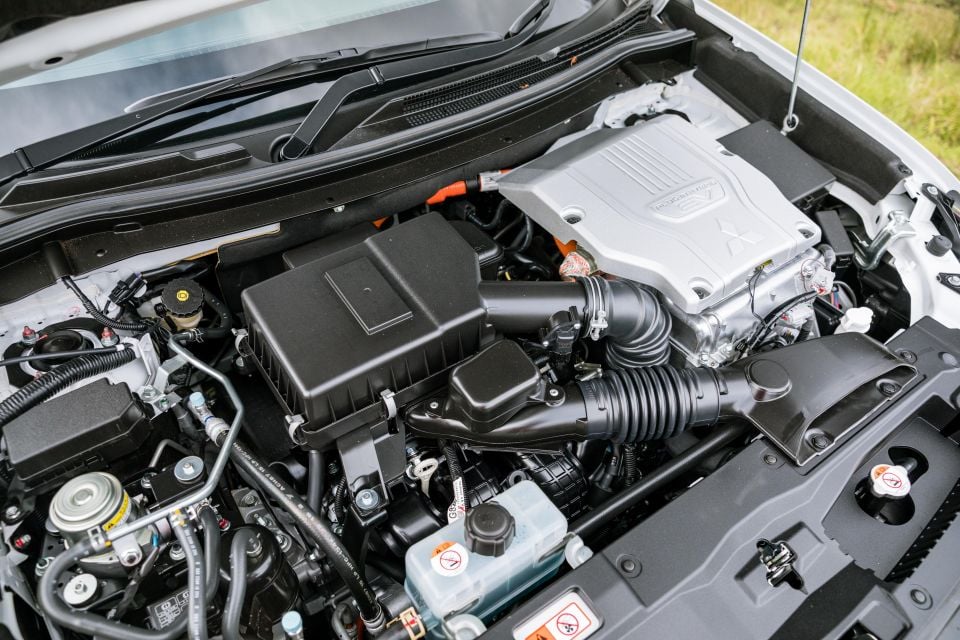
We may ask what’s under the bonnet but what’s equally important is what’s underneath the floor.
The all-wheel drive Outlander PHEV mates a 2.4-litre four-cylinder Atkinson Cycle petrol engine to a 13.8kWh lithium-ion battery pack and electric motors on both axles. The engine powers the wheels directly when the battery is depleted and can also act as a generator for the battery.
The engine produces 94kW of power and 199Nm of torque, while the front electric motor produces 60kW and 137Nm and the rear one produces 70kW and 195Nm. Mitsubishi doesn’t specify the combined output.

Mitsubishi claims a pure-electric range of 54km, though this is under the more lenient NEDC cycle.
You can charge it in around eight hours using a regular home wall socket or in 30 minutes using a DC fast charger, though you’ll need to find one with a CHADeMO plug – Mitsubishi has yet to move to the newer Type 2 plug.
Braked towing capacity is 1500kg and unbraked towing capacity is 750kg, while the maximum tow ball download is 150kg.
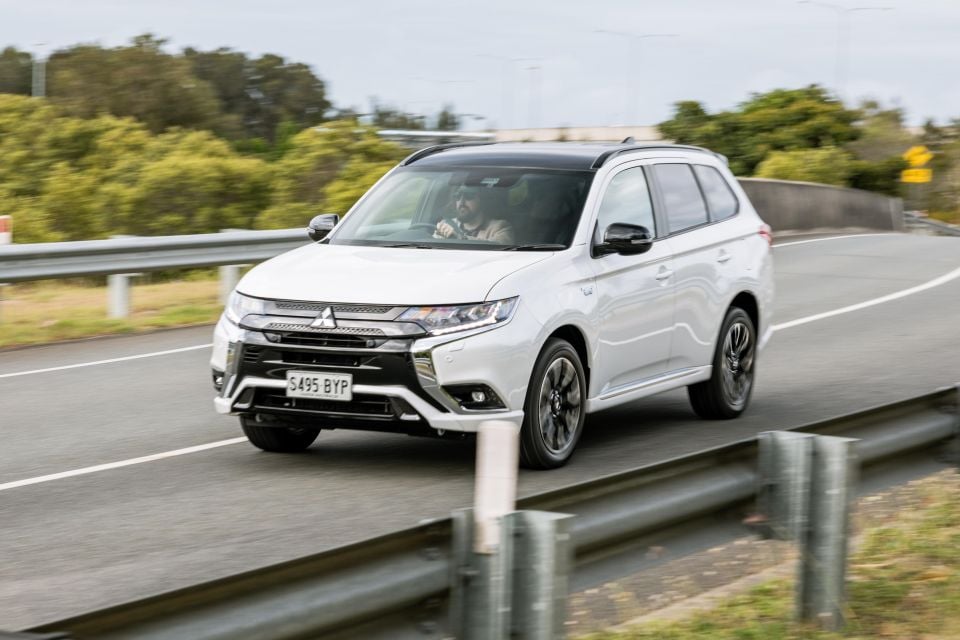
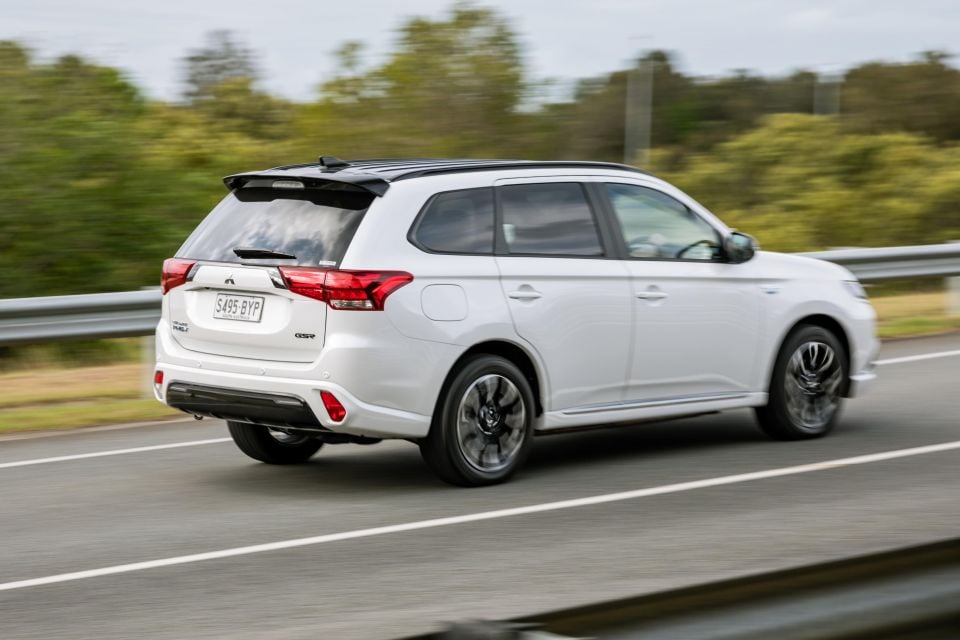
Where expert car reviews meet expert car buying – CarExpert gives you trusted advice, personalised service and real savings on your next new car.
The last thing the Outlander PHEV needed was a firmer suspension tune and yet that’s what the GSR adds.
The regular Outlander is already middling at best in terms of ride quality, struggling to filter out larger imperfections in the road. The PHEV’s heavy battery pack doesn’t help, while the GSR’s firmer suspension tune worsens it still.
The GSR suffers from a lumpy ride on all but the smoothest of surfaces, and large ruts reverberate through the cabin.
Though it adds a sportier suspension tune, the GSR doesn’t feel any sportier in terms of steering and handling. It’s resistant to movement and feels ponderous and prone to understeer, while the steering is light and lacking in feel, though that does aid low-speed manoeuvres.
The powertrain itself is splendid, though. It defaults to pure electric and you can travel at speeds of up to 130km/h without the petrol engine firing up.
Even with the battery depleted, the PHEV feels more like a hybrid than a purely petrol vehicle. That’s because the petrol engine helps charge the battery, with the electric motors sending power to the wheels at low speeds.
The transition between electric and petrol power is smooth and with 50km of electric range, you mightn’t ever experience the petrol engine fire up in your daily commute if you’re charging it at home every night.
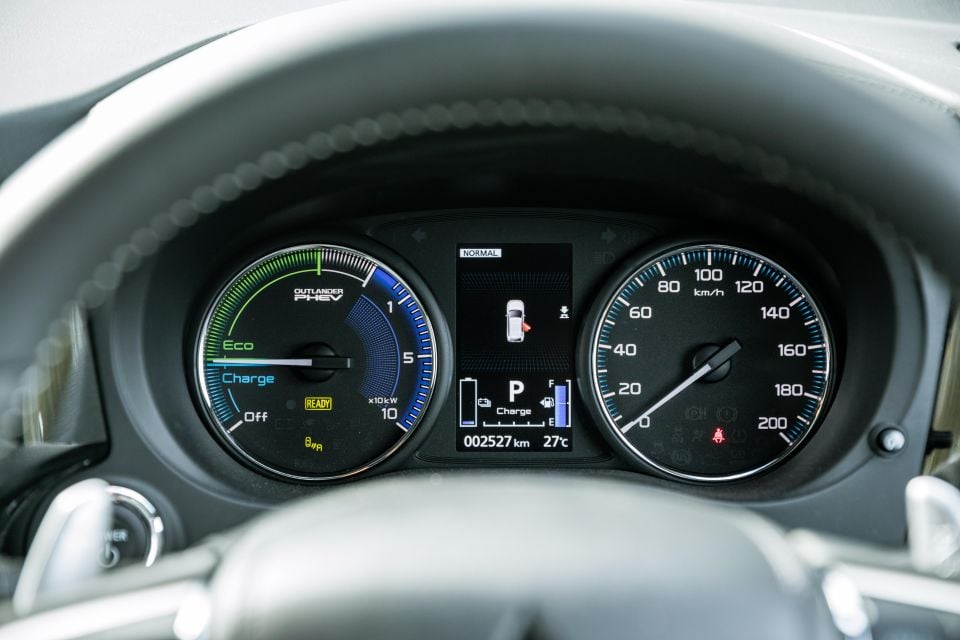

With the battery charged, the instant thrust of the electric motors makes you feel like you’re in a proper battery-electric vehicle. And that power – with only the faintest sound from the electric motors – can be somewhat addictive at the expense of range. Drive judiciously, however, and the PHEV has enough electric range for many commutes.
There’s a Sport mode which makes the GSR quicker while also turning up the regenerative braking to B5, while a screen in the infotainment system displays an overview of how the hybrid system is working.
You might initially be confused by the instrument cluster. If the needle is pointing to the left-hand side of the left gauge, it’s relying on battery power. Bury your foot and it’ll shift to the right-hand, blue side of the dial, though instead of displaying in revs per minute in increments of a thousand, it shows just three numbers: 1, 5 and 10, with a label below reading “x10kW”.
Finally, if you want to take your PHEV off-roading – and we strongly advise that be only of the “light” kind – there’s a Lock mode that simulates a locking centre differential, splitting torque 50/50 front/rear.
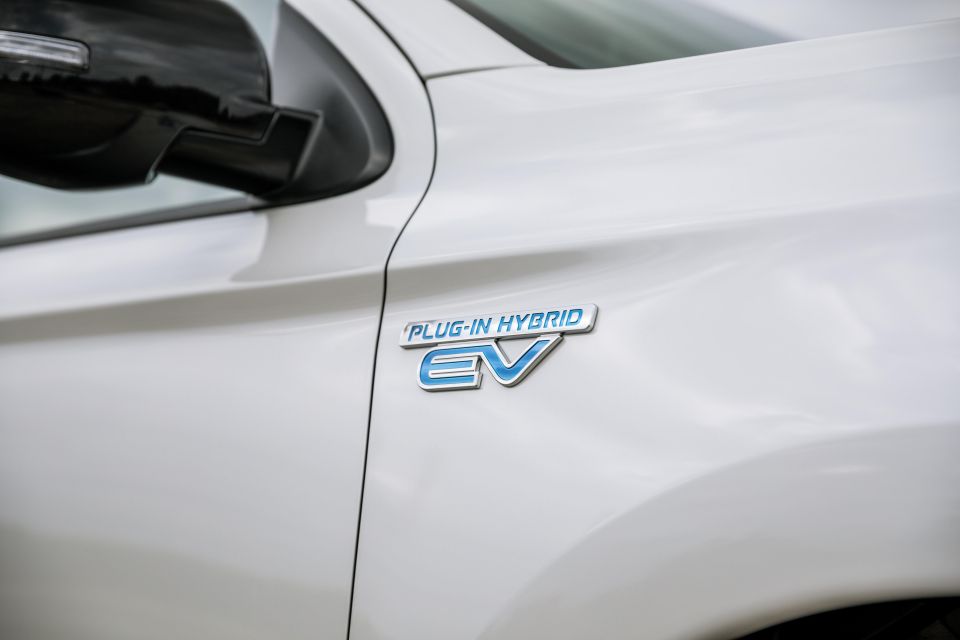
The claimed electric range of 50km is a realistic claim, fortunately. Technically, the PHEV also has a claimed combined fuel economy figure of 1.9L/100km.
With the battery completely depleted, we averaged 7.3L/100km on our fuel economy test loop. In an all-wheel drive Exceed with the petrol engine, we averaged 8.6L/100km on the same loop.
The PHEV requires servicing every 12 months or 15,000km, whichever comes first. Mitsubishi offers a 10-year capped-price service plan, with the first, fifth and seventh services costing $299, the sixth, eighth and tenth costing $799, and all the others costing $399.
If you consistently service within Mitsubishi’s network, the five-year, 100,000km warranty is bumped up to 10 years and 200,000km.
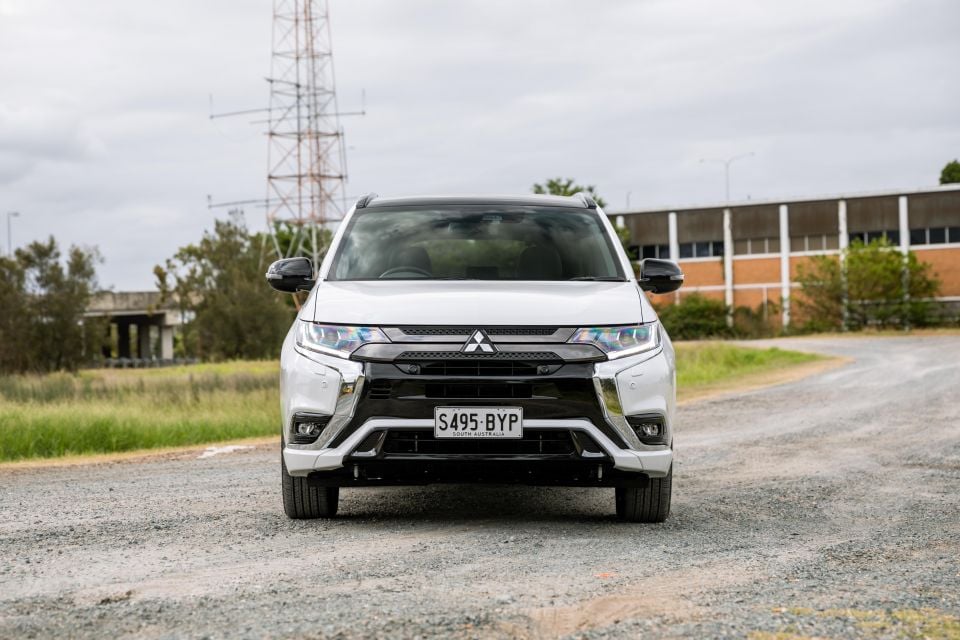
Mitsubishi deserves credit for bringing a plug-in hybrid SUV to market long before anybody else did. And though PHEVs have proliferated throughout luxury brands, the Outlander PHEV still stands alone as Australia’s only mainstream PHEV SUV.
It’s good timing, then, that Mitsubishi is readying its next-generation Outlander because the current model already feels dated and that will be exacerbated when the MG e-HS and Ford Escape PHEV arrive.
The current car has a terrific powertrain that ably balances efficiency, performance and refinement.
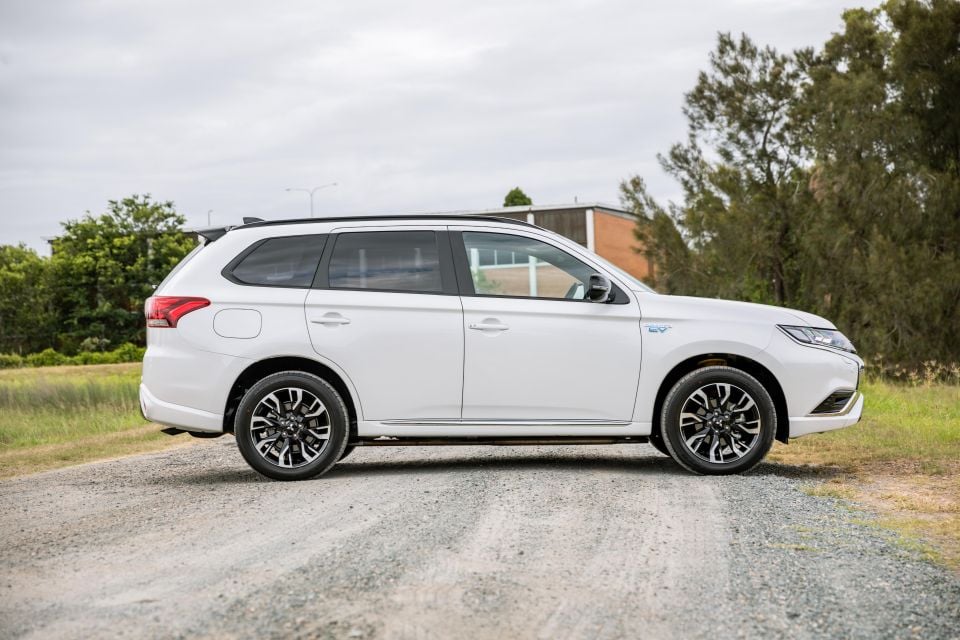
We look forward to seeing it in the fresher Eclipse Cross next year, and we imagine Alliance partners Renault and Nissan will want to make good use of Mitsubishi’s plug-in expertise.
The Outlander feels old, from its thin doors to its infotainment system. And while we don’t expect a mid-sized SUV to be exciting to drive, even if it does have a GSR badge, we do expect it to ride better than the PHEV GSR.
Still, this is the only game in town if you want a mainstream plug-in SUV. You’ll need to decide if the advantages of a plug-in hybrid warrant the extra cost over a petrol SUV, and whether you’re happy owning one of the more elderly-feeling vehicles in this segment.

Click the images for the full gallery
MORE: Mitsubishi Outlander news and reviews MORE: Everything Mitsubishi
Where expert car reviews meet expert car buying – CarExpert gives you trusted advice, personalised service and real savings on your next new car.
William Stopford is an automotive journalist with a passion for mainstream cars, automotive history and overseas auto markets.


Josh Nevett
1 Day Ago


Josh Nevett
3 Days Ago
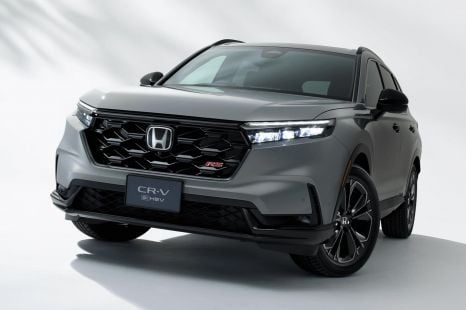

James Wong
5 Days Ago


Derek Fung
5 Days Ago


CarExpert.com.au
8 Days Ago
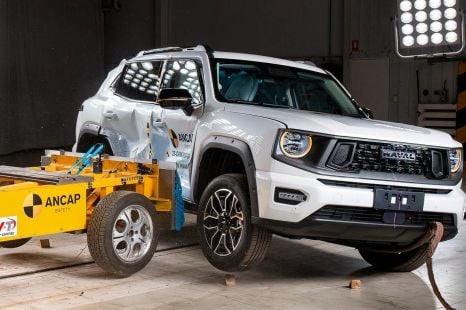

James Wong
8 Days Ago